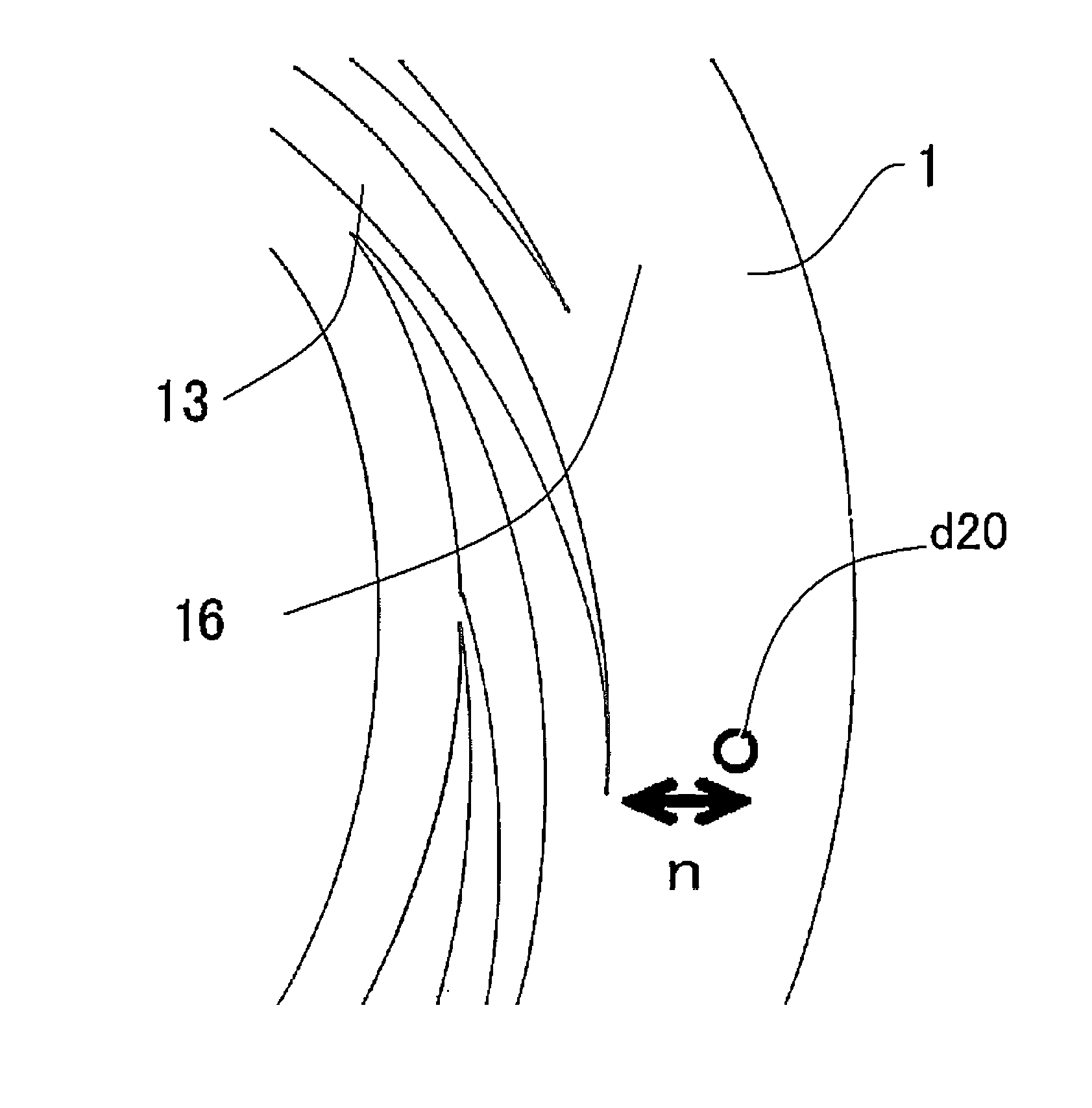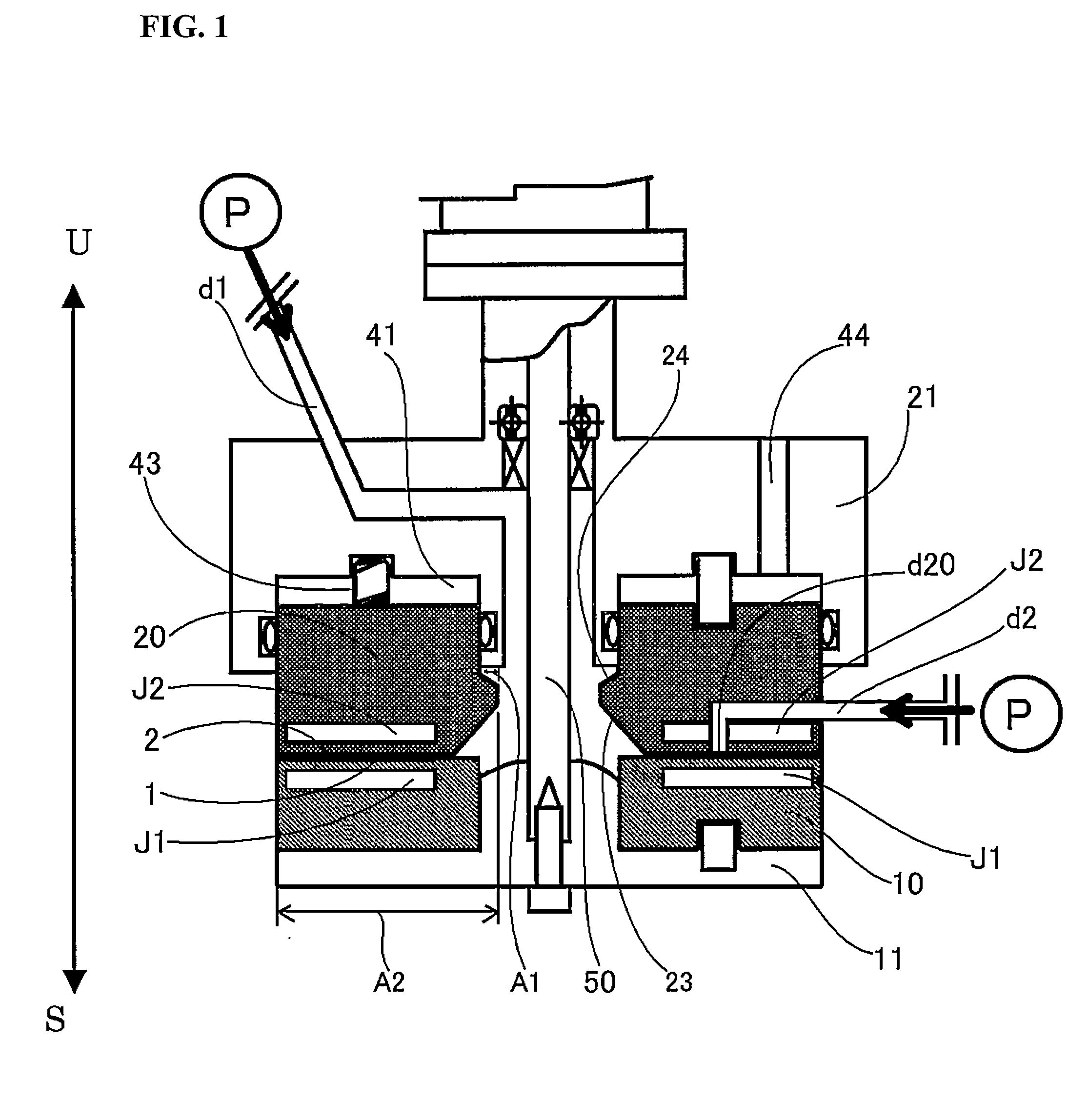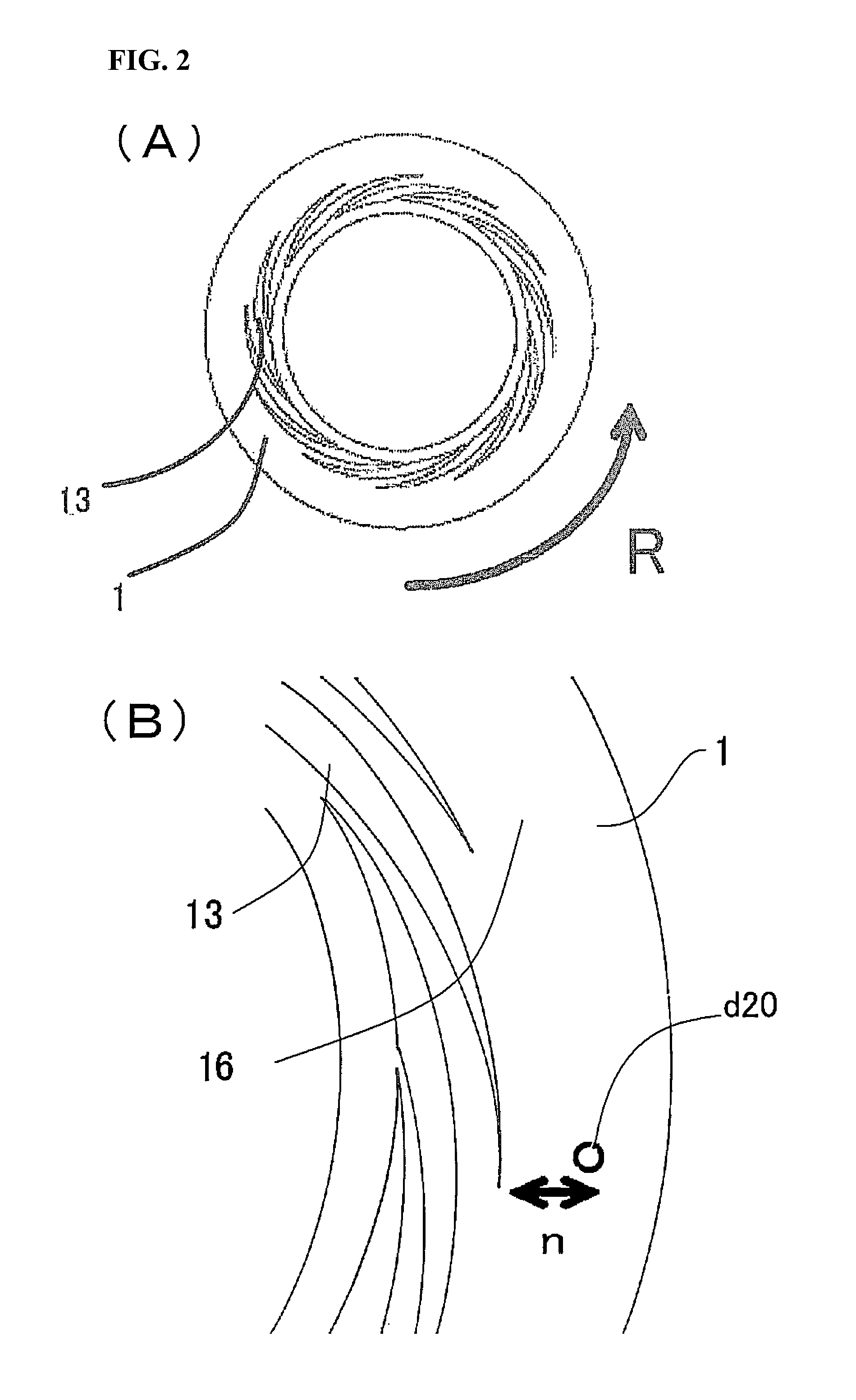Method for producing microparticles having controlled crystallite diameter
a technology of crystallite diameter and microparticles, applied in the field of microparticles, can solve the problems of increasing energy cost, physical properties cannot be obtained, increasing energy cost, etc., and achieves the effect of low cost and energy, providing cheaply and stably
- Summary
- Abstract
- Description
- Claims
- Application Information
AI Technical Summary
Benefits of technology
Problems solved by technology
Method used
Image
Examples
example 1
[0149]The yttria-stabilized zirconium microparticles were prepared by the following procedure by using the apparatus shown in FIG. 1. A mixed metal salt solution (raw material fluid) with pH of 0.12, comprising 11.8% by weight of nitrate-oxidized zirconium dihydrate and 0.18% by weight of yttrium nitrate dissolved in pure water, was mixed with the aqueous basic solution (separating fluid) with pH of 13.03, obtained by dissolving sodium hydroxide in pure water so as to give the concentration thereof being 1% by weight, in the thin film fluid formed between the processing surfaces 1 and 2, thereby separating the precursor microparticles of the yttria-stabilized zirconia in the thin film fluid.
example 2
[0150]The yttria-stabilized zirconium microparticles were prepared by the following procedure by using the apparatus shown in FIG. 1. A mixed metal salt solution (raw material fluid) with pH of 0.12, comprising 11.8% by weight of nitrate-oxidized zirconium dihydrate and 0.18% by weight of yttrium nitrate dissolved in pure water, was mixed with the aqueous basic solution (separating fluid) with pH of 11.33, obtained by dissolving aqueous ammonia containing ammonia 28% in pure water so as to give the concentration thereof being ammonia 1% by weight, in the thin film fluid formed between the processing surfaces 1 and 2, thereby separating the precursor microparticles of the yttria-stabilized zirconia in the thin film fluid.
example 3
[0151]The yttria-stabilized zirconium microparticles were prepared by the following procedure by using the apparatus shown in FIG. 1. A mixed metal salt solution (raw material fluid) with pH of 0.12, comprising 11.8% by weight of nitrate-oxidized zirconium dihydrate and 0.18% by weight of yttrium nitrate dissolved in pure water, was mixed with the aqueous basic solution (separating fluid) with pH of 8.46, obtained by dissolving potassium hydrogen carbonate in pure water so as to give the concentration thereof being 1% by weight, in the thin film fluid formed between the processing surfaces 1 and 2, thereby separating the precursor microparticles of the yttria-stabilized zirconia in the thin film fluid.
[0152]While the aqueous basic solution (separating fluid) was introduced as the first fluid from the center with the supply pressure of 0.50 MPaG, the rotation number of 1700 rpm, the supply temperature of 25° C., and the introduction velocity of 200 mL / minute, the mixed metal salt sol...
PUM
| Property | Measurement | Unit |
|---|---|---|
| Temperature | aaaaa | aaaaa |
| Diameter | aaaaa | aaaaa |
| Concentration | aaaaa | aaaaa |
Abstract
Description
Claims
Application Information
 Login to View More
Login to View More - R&D
- Intellectual Property
- Life Sciences
- Materials
- Tech Scout
- Unparalleled Data Quality
- Higher Quality Content
- 60% Fewer Hallucinations
Browse by: Latest US Patents, China's latest patents, Technical Efficacy Thesaurus, Application Domain, Technology Topic, Popular Technical Reports.
© 2025 PatSnap. All rights reserved.Legal|Privacy policy|Modern Slavery Act Transparency Statement|Sitemap|About US| Contact US: help@patsnap.com



